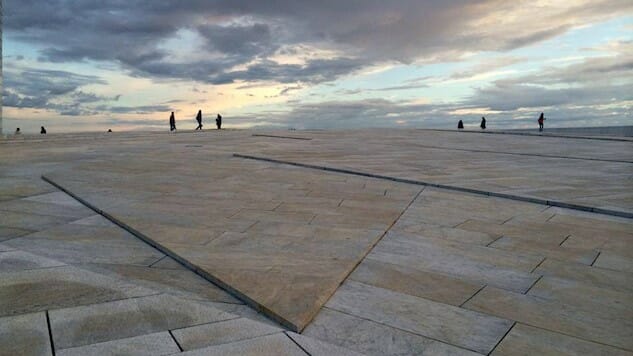
With a history dating back to about 1,000 AD, Oslo has undergone extensive identity changes. After being mostly destroyed by fire in 1642, it was rebuilt and renamed as Christiana (in honor of then King Christian IV), then had the spelling adjusted to Kristiania in 1877, and then went back to its original name in 1925.
Nowadays, Oslo is a maritime center, an economic powerhouse, an architectural force and the setting for the Nobel Peace Prize ceremony.
As if that weren’t enough, its surrounding fjords and green spaces provide quite the scenery.
Here are 10 places in Oslo to soak in its multifaceted legacy.
1. Munch Museum
When painter, printmaker and Expressionist pioneer Edvard Munch died in January 1944, he bequeathed his entire collection and writings to the City of Oslo. Two years later, Oslo officials decided to build a museum in his honor, and its doors opened in Oslo’s Tøyen park area in 1963.
Known as Munchmuseet in Norwegian, the Munch Museum holds many of the artist’s paintings and print motifs. Its exhibits have paired Munch’s work with other top artistic giants like Vincent Van Gogh and fellow Norwegian (and sculptor) Gustav Vigeland, along with mini-showings from its collection. It might be surprising to see a black and white version of Munch’s “The Scream,” but there are four different versions of this famous piece housed within Munch Museum; a private collection; and also in Oslo, The National Museum of Art, Architecture and Design, also known as Nasjonalmuseet.
In 2004, armed robbers stormed into the Munch Museum and brazenly took “The Scream” and another Munch painting, “Madonna” right off the walls. The paintings were recovered two years later. In order to provide the Munch Museum with more exhibition space, construction of a new version of the museum in the harbor area of Bjørvika is set to happen around 2020.
2. Oslo Opera House
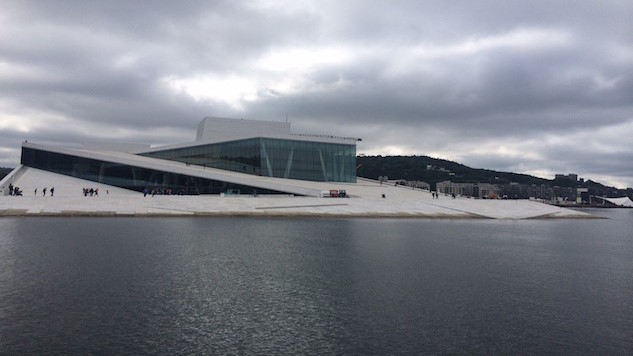 Photo by Michele Herrmann
Photo by Michele Herrmann
Situated in Bjørvika, this opera house is home to The Norwegian National Opera and Ballet and is situated across from a fjord. And if you’re not into the arts, visit this modern facility for its panoramic views.
Opened in 2008, this waterfront cultural venue was designed with nature in mind, said to replicate a floating glacier. Its resemblance is topped off with an even more impressive feature: its white marble covered roof (pictured at top) designed to handle foot traffic, so visitors can walk up to the top of this angled roof and take in the scenery around them.
Inside the opera house you’ll find a foyer graced with high glass windows; a restaurant; a gift shop; and display fixtures such as the “Wave Wall,” a cone shaped geometric structure made from oak. Along with performances, there are guided tours highlighting the opera house’s facilities and behind the scenes operations.
3. Akershus Fortress
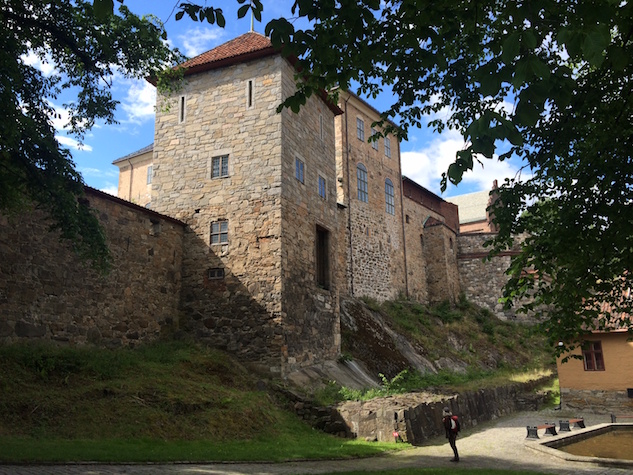
Photo by Michele Herrmann
Built as protection for Oslo around the 1300s, Akershus Fortress still stands tall. The property features hilltops, high-up outlook areas and stoned pathways—so wear comfortable shoes. For a smoother option, and for more of the history behind this place, head to the visitors center or take a tour of Akershus Fortress, featuring impressive reception rooms, grand halls, a church and a mausoleum for Norwegian royalty.
In its heyday, Akershus fared well in holding off invaders, and it once also housed a prison. Sadly, the fortress succumbed to the Nazis upon the invasion of German forces in 1940, and you can learn more about Norway’s place in World War II, particularly during German occupation, here.
During World War II, Norwegian patriots were executed at Akershus; a memorial honoring them is adjacent to the museum.
Akershus is also the location for Norway’s Resistance Museum, which tells the story of the Norwegian resistance movement from 1940 to 1945, the year Norway was liberated.
Akershus is also the location for Norway’s Resistance Museum, which tells the story of the Norwegian resistance movement from 1940 to 1945, the year Norway was liberated.
4. Kvadraturen
 Photo by Michele Herrmann
Photo by Michele Herrmann
The downtown district of Kvadraturen near Akershus Fortress has quite a signature centerpiece: Christiania Torv. This square has a fountain with a statue of a hand pointing downward. It is supposedly pointing to the spot where King Christian IV planned to build his new town following a decimating fire in 1624. Along with this noticeable statue, Kvadraturen has a rectangular street pattern; buildings dating back to the 17th century; and museums for film, architecture or contemporary art. As for dining, Kvadraturen has a number of eateries such as the upscale Engebret Café, said to be Oslo’s oldest restaurant. Apparently, it was a regular hangout for Norwegian cultural elite like Henry Ibsen and Edvard Grieg.
5. Oslo City Hall
This administrative building may seem plain from the outside but its history and interior is anything but. To start, its construction started in 1931 but was put on hold during the Second World War. The building was officially inaugurated in 1950.
Outside statues depict the various tradesmen who helped in building this city hall, and one of the building’s two towers contains a 49-bell carillon that plays hourly. Yet, the chiming produced from these bells does not always ring to traditional tunes. Like a rotating iTunes selection, these bells sound off musical selections from classical pieces to contemporary tunes such as songs by the late David Bowie and the Super Mario theme.
However, it’s what’s inside Oslo City Hall that makes it worth visiting—particularly in the main hall where wall murals featuring Norwegian motifs from the first half of the 20th century showcase Norway’s history, culture and society. Norwegian artifacts are also on display, but the real reason to visit is that Oslo City Hall hosts the annual ceremony for awarding the Nobel Peace Prize every Dec. 10. It’s the only one of the five Nobel Prizes awarded in Norway (the rest are done in Stockholm).
6. Vigeland Park
 Photo by Michele Herrmann
Photo by Michele Herrmann
Though public parks around the world contain their fare share of statues, this place in Oslo carries the distinction of being the world’s largest sculpture park whose stationary creations are all made by a single artist—Gustav Vigeland.
Considered to be Vigeland’s life work, and completed between 1939-1949, his namesake park features over 200 sculptures constructed in bronze, granite or cast iron. Vigeland also oversaw the architectural layout and design, with well-maintained walking paths and gardens. Key pieces to spend time at include the “Angry Little Boy,” whose bronze facial expression says it all. “The Monolith” is one that’s hard to miss; it’s a massive grouping of human figures in various interactions that was incredibly carved from a single block of granite.
7. Mathallen Oslo
 Photo by Finn Ståle Felberg/Mathallen
Photo by Finn Ståle Felberg/Mathallen
This contemporary food hall in Oslo’s Vulkan area holds about 30 specialty shops, cafes and eateries featuring Norwegian small-scale products but also importing delicacies from neighboring countries like France and Italy.
Opened in 2012, repurposing a former factory building, Mathallen is split up with shops and restaurants having their respective neighborly space. Current tenants include Bondens Butikk, which showcases produce, cheeses and occasional meats from Norwegian farmers; Ma Poule, offering just about every edible aspect of French cuisine; and Noodles, an Asian fast food setup. As for a sit-down spot, try Smelteverket, a Scandinavian gastro pub situated in Mathallen’s basement with views of the Akerselva River (sounds impossible, but it’s true). Olso’s longest bar features a shared plate menu that consists of global offerings such as tapas and a good selection of craft beers.
8. Viking Ship Museum
Bygdøy, a peninsula on the western side of Oslo, is the location for many of the city’s nautical history museums. Among them is the Viking Ship Museum, which gives a glimpse into how Vikings got around. It’s a simple museum in layout, but the items on display will keep your eyes glued.
This museum houses two well-preserved wooden ships (the ornately-detailed Oseberg and the long ship, Gokstad) and then about half of a third ship (The Tune) all discovered at and excavated from Norwegian farms in the late 19th or early 20th centuries. All three original, oak-made ships were considered to be fine sailing vessels in their day and then later served as burial chambers for either elite men and, in Oseberg’s case, two women who must have held a position of importance in the community to have been given such a grave. Alongside these ships, there are display cases of various objects found in the hulls of these vessels, particularly the skeletal remains of those who were laid to rest inside them.
Near the Oseberg and the Gokstad, head up the adjacent stairways for an overhead view at both of these vessels and a better shot at capturing them in their entirety.
9. Fram Museum
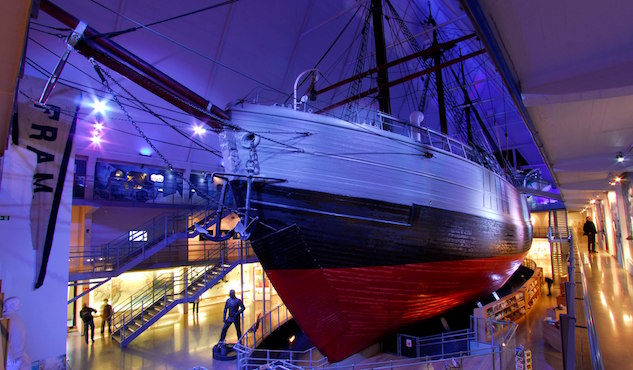
Photo courtesy of Fram Museum
Speaking of ships, Vikings weren’t the only explorers whose sea transportation made history books. The Fram Museum, also on Bygdøy, is all about a Norwegian-built wooden ship whose claim to fame was handling polar research expeditions. It was used on three major expeditions, one of which took Roald Amundsen to Antarctica for his 1910-1912 journey to the South Pole.
Nowadays, the Fram is docked inside the museum, where visitors can climb aboard and go below deck to view cabins and quarters. Along with the Fram, you’ll see photos, maps and other historic documents relating to these expeditions, plus a ship known as the Gjøa, which was the first vessel to sail through the Northwest Passage. And if you want to really get a feel for the chilly conditions that the Fram’s passengers experienced, walk through a polar simulator that feels like going into a meat locker but with another way out.
10. Holmenkollen Ski Museum & Tower
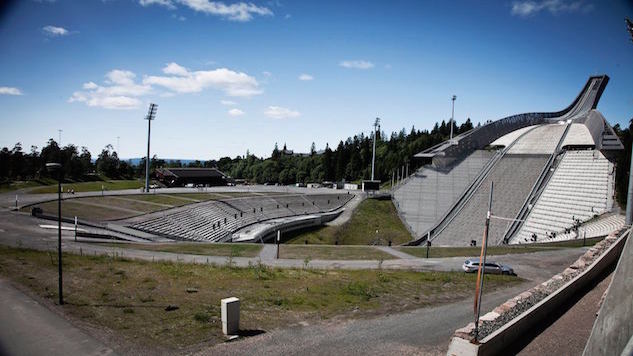
Photo courtesy of Holmenkollen on Facebook
Skiing is engrained in Norwegian tradition, so it’s not surprising there is a museum dedicated to this winter sport in the country’s capital. In fact, this museum focuses on the history of skiing, that’s said to date back over 4,000 years, from pre-historic times to the modern day (with one ski dating back to around 600 AD).
The museum is at the base of Holmenkollen Ski Jump, a hill that has been the site of various ski competitions since 1892. Its ski jump has experienced at least 18 modifications over more than a century, such as the addition of a lift and increase in the length of the jump.
The ski jump tower’s observation deck provides nice hilltop views of Oslo. Along with the jump tower and museum, this complex features a cafe/restaurant and a simulator that takes you on quite a motion ride. Your entrance ticket applies to both the museum and the tower. Spectators can get here by taking Metro Line No. 1 to Holmenkollen Station.
Michele is a travel/lifestyle writer who got over her fears and picky eating habits to immerse herself in destinations as far as Fiji, to date. Her work has been featured on Yahoo Travel, ShermansTravel, Budget Travel, and Epicure & Culture.